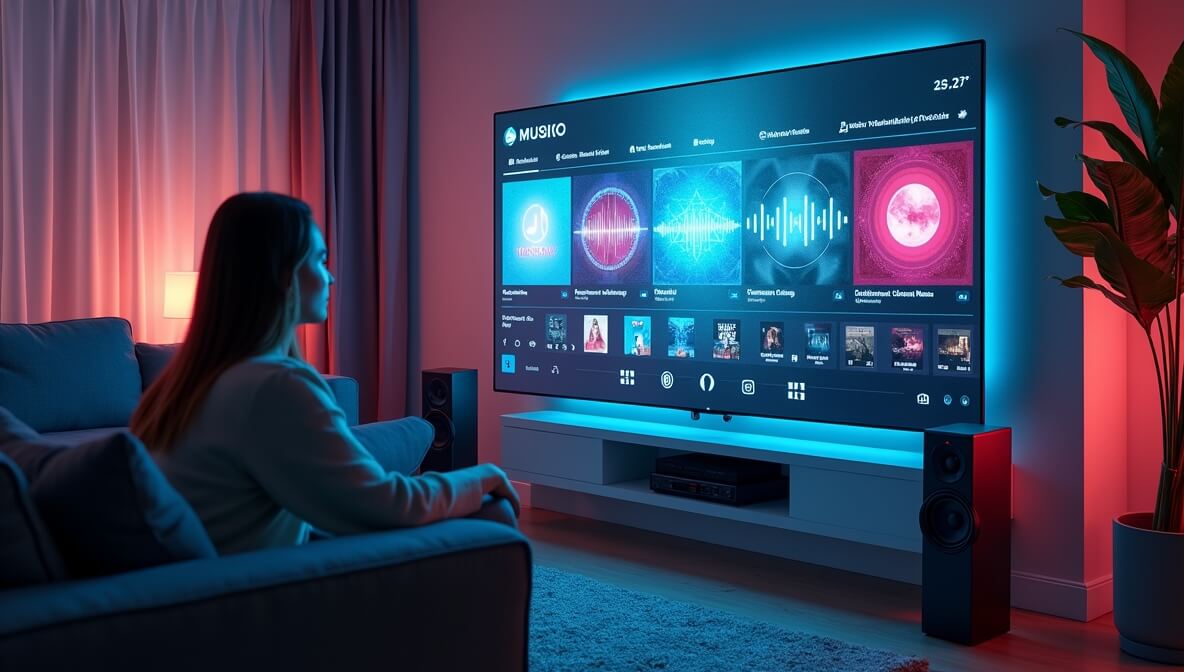July 30, 2025

Not long ago, streaming music was a futuristic concept—millions of songs, instantly accessible from a phone. Today, it’s the default way we consume music, replacing CDs, downloads, and even radio.
But here’s the truth: music streaming is nowhere near its final form.
In 2025, streaming platforms are transforming from passive listening apps into dynamic ecosystems—where fans and artists connect more deeply, where AI personalizes every beat, and where creators get more control (and fairer pay).
Let’s explore what’s changing and how you—whether a fan, creator, or musician—can benefit from these exciting shifts.
Gone are the days of basic “recommended for you” playlists. Streaming apps like Spotify, Apple Music, and YouTube Music now harness AI that understands:
These platforms are no longer just suggesting playlists—they’re generating real-time, AI-curated soundtracks crafted for your exact moment.
Want to take control and create your own music without instruments? Use an AI music generator like Soundful or Mubert Render to produce royalty-free tracks in minutes, tailored to your vibe.
Streaming is evolving from passive listening to active co-creation—making you not just a listener, but a collaborator in the music experience.
In the old days, musicians needed record labels for distribution and promotion. Now, thanks to direct-to-fan platforms like Bandcamp and subscription-based fan communities on Patreon, artists can:
This shift empowers musicians to retain more creative control and revenue—building a loyal audience without needing a viral hit.
If you’re an aspiring artist, learn how music royalties work here to protect your earnings. Also, explore TuneCore and DistroKid for easy DIY music distribution to Spotify, Apple Music, and beyond.
For years, the biggest criticism of streaming was its terrible payout rates—fractions of a cent per stream. But in 2025, new payment systems are gaining ground:
For independent musicians, this is a game-changer—you no longer need millions of streams to make a living. A loyal micro-audience can be enough.
Curious how to get your music on streaming platforms? Read this independent musician’s guide to music distribution.
Music isn’t just an audio experience anymore. Streaming platforms are layering visuals, interactivity, and community features into the listening journey:
For artists, this means creating music is no longer just about sound—it’s about crafting a full sensory experience. Learning simple production skills like mixing with reverb & delay or understanding audio compression here can make your tracks stand out across headphones, phones, and immersive platforms.
Streaming is now a multi-dimensional artform—sound, sight, and social connection all in one.
If you’re a YouTuber, podcaster, or content creator, you know the pain of copyright strikes and takedown notices. But now, finding high-quality royalty-free music is faster, safer, and simpler.
No more sifting through sketchy “free music” folders. In 2025, content creators have professional-grade, license-safe music at their fingertips.
Need a crash course on safe music use for YouTube? Check out this simple guide to music licensing to avoid copyright headaches.
Music streaming in 2025 is evolving into a two-way street:
Whether you’re a music lover who wants more meaningful listening experiences, a content creator looking for tracks that won’t get you flagged, or an aspiring musician ready to release your first single independently—now is the best time to dive in and explore.
Stay up to date with the latest tips, expert insights, product reviews, and step-by-step guides to help you grow, create, and succeed—no matter your industry or passion.